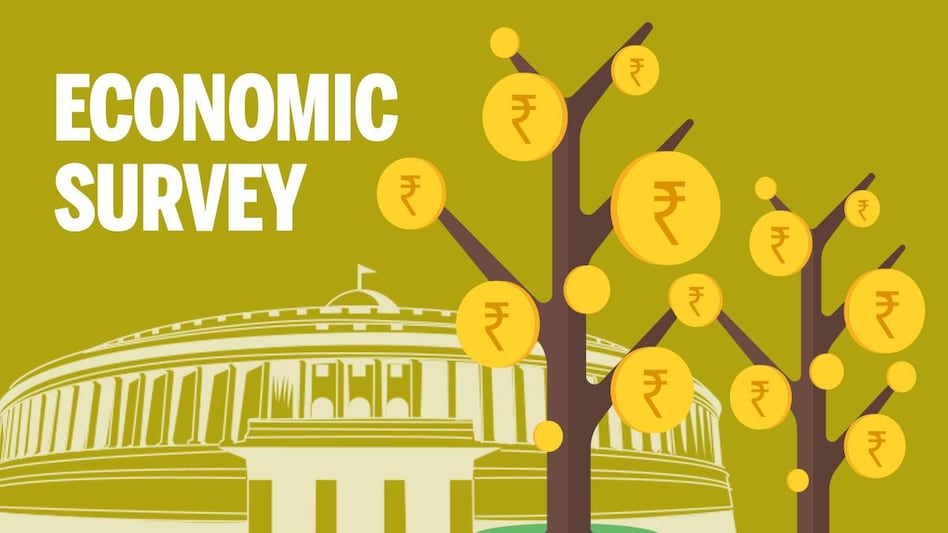
“We therefore, feel that assessee in the instant case is entitled to exemption of Rs. 50.00 lacs u/s 54EC and it is not the case where two interpretations of Section 54EC are possible. The earlier notification of the Govt. clearly suggested that the assessee’s are entitled to the extent of Rs. 50.00 lacs u/s 54EC of the Act. Investment within 06 months is the investment for that financial year in which transfer has taken place. Hence, subsequent investment is to be considered as part of the investment of financial year in which transfer has taken place. We therefore, hold that the ld. CIT(A) was not justified in allowing deduction to the assessee to the extent of Rs. 1.00 crore u/s 54EC of the Act. We therefore, uphold the order of the AO.” – Hon’ble ITAT (Jaipur)
Full Text
| No. – IT APPEAL NO. 648 (JP.) OF 2011 |
| Dated – January 31, 2012 |
R.K.GUPTA, N.L.KALRA, JJ. Vinod Johri for the Appellant. N.L. Kalra, Accountant Member – The revenue has filed an appeal against the order of the ld. CIT(A), Ajmer dated 20-04-2011 for the assessment year 2008-09.
2.1 The ground of appeal raised by the revenue is as under:- “In view of the facts and circumstances of the case, the ld. CIT(A) Ajmer has erred in Directing the AO to allow the claim of deduction u/s 54EC from Rs. 50,00,000/- to Rs. 1,00,00,000/- as the Ld. CIT(A) has not appreciated the facts that the deemed date of allotment of Bond is 30.6.2008 which is beyond the time limit of 6 months as per section 54EC from the date of transfer i.e., 13.12.2007. The date of maturity is also 30.6.2011 which is evident from Bond certificate.”
2.2 The assessee is an HUF, filed return of income on 29.07.2008 declaring income of Rs. 17,12,693/-. During the year under consideration, the assessee sold the property for Rs. 2.47 Crores on 13.12.2007 and disclosed capital gain of Rs. 1,14,09,880/-. The assessee claimed deduction u/s 54EC in respect of Long Term Capital Gain amounting toRs. 1.00 Crore i.e., invested in specified capital gain bond (Rs. 50.00 Lacs on 31.03.2008 + Rs. 50.00 Lacs was made on 10.06.2008). The only dispute is with regard to the next investment of Rs. 50 Lacs made on 10.06.2008, which was not considered by the AO by relying upon the Proviso below Sec.54EC which provided that investment in any financial year cannot exceed Rs. 50 Lacs. Hence, the AO was of the view that the assessee having made a claim of Rs. 1.00 Crore, exceeded the investment limit prescribed in the proviso and therefore, restricted the deduction upto Rs. 50 Lacs accordingly.
2.3 In the first appeal, the ld. CIT(A) held as under: “3.3 Facts of the case and argument of the appellant have been carefully considered. The proviso to section 54EC(1) reads as follows: “Provided that the investment made on or after the 1st day of April, 2007 in the long-term specified asset by an assessee during any financial year does not exceed Rs. 50,00,000/-.” 3.4 It is clear from the language of proviso that the maximum limit for investment in specified asset is Rs. 50,00,000/- for a financial year only. In this case the appellant invested Rs. 50,00,000/- on 31.03.2008 and another sum of Rs. 50,00,000/- on 10.06.2008. Thus investment of Rs. 50,00,000/- each has been made during two financial years i.e. F.Y.2007-08 & 2008-09. In either of the two cases, investment is made within the time limit of six months from the date of transfer. I therefore hold that appellant is entitled to deduction of Rs. 1,00,00,000/- u/s 54EC. AO is not justified to restrict the deduction to Rs. 50,00,000/-. He is directed to allow deduction of Rs. 1,00,00,000/- as claimed by appellant. Ground No.1 of the appeal is thus allowed.”
2.4 During the course of proceedings before us, the ld. DR drew our attention to the findings of the AO recorded at page 2 of the assessment order. The deduction u/s 54EC should not exceed Rs. 50.00 lacs. The word ‘any financial year’ mentioned in proviso to Section 54EC refers to the investment to be made for the purpose of claiming deduction from capital gain. The ld. DR further submitted that proviso cannot give undue benefit to one section of the tax payers. If an assessee transfers certain property in the month of April of the financial year then he has to make investment within 06 months i.e. within the same financial year. The exemption from capital gain will be only to the extent of Rs. 50.00 lacs. In the case of another tax payer who transfers his assets in the month of Oct. then he cannot claim exemption u/s 54EC by purchasing Rs. 50.00 lacs bonds in the financial year in which the transfer has taken place and another Rs. 50.00 lacs in the subsequent financial year because the period of six months will include some part of the subsequent financial year. Thus two assessee’s who have earned the capital gain for the same assessment year cannot be treated differently. It was therefore, submitted that interpretation of proviso should not lead to discrimination against various tax payers. The ld. DR drew our attention to the recent judgment of Hon’ble Apex Court in the case of Essar Oil Ltd. In this case, the Essar Oil commenced production from 26-11-2006 while sales tax incentive was to be available to a undertaking which has commenced production before 15-08-2003. The delay in commencement of production was on account of litigation pending in the Court. There was an injunction of Hon’ble High Court. The Hon’ble Apex Court observed that mere mistake or error committed by the Court cannot be a ground for restitution. The Hon’ble Apex Court also held as under:- ”In the case, Essar case was categorically told by letter dated 28-05-2002, which is much prior to the expiry of the period that time for availing the exemption cannot be extended. Admittedly, Essar failed to meet the deadline. In that factual scenario, the exercise undertaken by the High Court in the impugned judgement by directing various adjustments which virtually re-wrote the State’s exemption scheme, is an exercise which is, with great respect, neither warranted in law nor supported by precedents. There is no question of equity here, an exemption is a stand alone process. Either any industry claiming exemption comes within it or it does not.”
2.5 Before us, the ld. AR has filed the following submissions. ”1. For better appreciation Sec. 54EC(1) is reproduced hereunder: “[Capital gain not to be charged on investment in certain bonds. 54EC. (1) Where the capital gain arises from the transfer of a long-term capital asset (the capital asset so transferred being hereafter in this section referred to as the original asset) and the assessee has, at any time within a period of six months after the date of such transfer, invested the whole or any part of capital gains in the long-term specified asset, the capital gain shall be dealt with in accordance with the following provisions of this section, that is to say,- (a) if the cost of the long-term specified asset is not less than the capital gain arising from the transfer of the original asset, the whole of such capital gain shall not be charged under section 45; (b) if the cost of the long-term specified asset is less than the capital gain arising from the transfer of the original asset, so much of the capital gain as bears to the whole of the capital gain the same proportion as the cost of acquisition of the long-term specified asset bears to the whole of the capital gain, shall not be charged under section 45 : [Provided that the investment made on or after the 1st day of April, 2007 in the long-term specified asset by an assessee during any financial year does not exceed fifty lakh rupees.]”
2. The only dispute between the parties was the case made out by the AO originally with regard to the invoking of the Proviso to Sec. 54EC and the AO denied the claim by saying that the assessee exceeded the limit of Rs. 50 Lacs in the given financial year. The ld. CIT(A) however, negated such contention holding that in two different financial years, the assessee, having made Rs. 50 Lacs each, never exceeded the limit as prescribed in the Proviso. In his view, the prescribed limit was to be reckoned for each financial year separately. Revenue not taken any ground, here, is no dispute any more. So far as this aspect is concerned, the admitted facts are that the assessee did make investment i.e. Rs. 50 Lacs on 10.06.2008 which falls within 6 months (12.06.2008) from the date of transfer (i.e. 13.12.2007). As per receipt of payment the date is 10.06.2008 (PB 1). As per Proviso, the limit of investment to be made by the assessee in a given financial year should not exceed Rs. 50 Lacs. Accordingly here in F.Y.2007-08 & 2008-09 each, the assessee made investment not exceeding Rs. 50 Lacs. Hence, the bar of the Proviso does not apply. Thus, the ld. CIT(A) rightly granted relief up to this stage.
3. Ground taken by the Revenue do not arises from the order the ld. CIT(A): A bare reading of the ground suggests that this issue was never raised out by the AO nor therefore, considered by the ld. CIT(A). In fact, this is an altogether new plea or new ground taken by the Revenue at this stage now, which is not permissible. It has been held in Indian Steel & Wire Products Ltd. v. CIT [1994] 208 ITR 740 (Cal.) (DPB 17-20) that an additional plea by the appellant, which altogether changes the complexion of the case as originally brought before the Commissioner (Appeals) and the Tribunal in second appeal, is not permissible to be raised at the stage of hearing. The respondent cannot be met with a surprise at this stage. 4. On merits, also however, the Revenue has got no case in as much as a careful reading of the provision contained u/s 54EC(1) requires the assessee only to invest the whole or any part of capital gains within a period of six months. It is not denied that the entire investment of Rs. 1 Crore was invested within the period of six months i.e. Rs. 50 Lacs on 31.03.2008 and the next Rs. 50 Lacs was made on 10.06.2008. This is clearly evident from the application no.105463 which bears the date of receipt as 10.06.2008 (PB 1). Even the cheque enclosed with the application bearing no.580003 of the State Bank of India, Ajmer was also dated 10.06.2008. The bank statement also clearly reflects that the amount of Rs. 50 Lacs was debited from assessee’s bank account on dated 11.06.2008 (PB 5-6). The law does not require that the allotment of the asset wherein investment was made, should have also be done within the period of six months. This is something beyond the control of the assessee and impossible. Kindly refer Modern Fibotex India Ltd. and another v. DCIT 212 ITR 496 (Cal.) held that the assessee cannot be consider a defaulter on account of retrospective amendment for treating the cash compensatory support as taxable as the assessee has already paid the salary before the amendment. approved in CIT v. Hindustan Electro Graphites Ltd. 243 ITR 48. The maxim of law “lex non cogit ad imposibilia” means that a man cannot be compelled by law to do what he cannot possibly perform. Reliance is placed on the following decisions:- 1. ACIT v. Jindal Irrigation Systems Ltd. 56 ITD 164 (Hyd.). 2. Canara Bank v. ITO 121 ITD 1 (Nag) 3. Inder Prasad Mathura Lal in ITA No.1068/JP/2010 for A.Y.2005-06 vide order dated 27.05.2011 (2011) 43-A BCAJ 709 (JP) (DPB 1-7).
5. Supporting Case Laws: Kindly refer Hindustan Unilever Ltd. v. DCIT[2010] 325 ITR 102 (Bom.) (DPB 8-15) held at page 104 that “(iii) That in order to avail of the benefit of section 54EC, the capital gains have to be invested in a long-term specified asset within a period of six months from the date of transfer. In the present case, the period of six months was due to expire on March 28, 2004. The assessee invested on amount of Rs.3.07 Crores on March 19, 2004. A receipt was issued on that date by the National Housing Bank. A debit was reflected in the bank account of the assessee to the extent of the sum invested on March 19, 2004. The certificate of bond was issued by the National Housing Bank on June 9, 2004, which referred to the date of allotment as March 31, 2004. For the purpose of the provisions of section 54EC, the date of the investment by the assessee must be regarded as the date on which payment was made and received by the National Housing Bank. This was within a period of six months from the date of transfer of the asset. Consequently, the provisions of section 54EC were complied with by the assessee.” Also refer CIT v. Smt. Beena K. Jain [1995] 217 ITR 363 (Bom.) (DPB 16) held that the relevant date for the purposes of section 54F is when the petitioner paid the full consideration amount on the flat becoming ready for occupation and obtained possession of the flat, and not the date of registration of the agreement of purchase. In CIT v. Ajit Singh Khajanchi [2007] 211 CTR 403 (MP) held that “Capital gains – Exemption under s.54F – Absence of registered deed – Purchase of house not evidenced by registered deed – Exemption under s.54F cannot be denied – In order to claim benefit of provision of s.54F, it is not necessary that the assessee should have become the owner of the house – Sec.54F speaks of purchase of house – Registration is not imperative – Balraj v. CIT [2002] 173 CTR (Del.) 452: (2002) 254 ITR 22 (Del.) relied on.”
6. The contention of the Revenue that the deemed date of allotment is 30.06.2008 firstly, is of no use and secondly, even otherwise is contradictory in as much as the period for which interest was paid by National Highways Authority of India was from 12.06.2008 and not from 30.06.2008 (PB 2). Again there is a contradiction in as much as the bond certificate (PB 4A-4B) relied upon by the Revenue has been signed on 26.05.2008 which falls within the period of six months. Thus, even on merits the new ground taken by the Revenue is a misconception of law. The assessee may kindly be held as entitled to the exemption as claimed.
7. Incentive provision to be construed liberally: We may also mention that Sec.54EC is an incentive provision with a view to encourage the investments and savings in the infrastructure. It has been held that an incentive provision has to be construed liberally. Kindly refer Bajaj Tempo Ltd. v. CIT 188 ITR 196 (SC), CIT v. Krishna Copper and Steel Rolling Mills 193 ITR 281 (SC), which has held for a liberal and broader interpretation of an incentive provision u/s 80I and CIT v. Baby Marine Exports 160 Taxman 160 (SC), the court strongly advocated for a liberal interpretation at pg 168 & 169 vide paras 26 & 27. It was held that “26 S. 80HHC was incorporated with the object of granting incentive to earners of foreign exchange. This court is Sea Pearl Industries v. CIT [2001] 2 SCC 33 also observed that the object of selection 80HHC is to grant incentive to earners of foreign exchange. In IPCA Laboratory Ltd. v. Dy. CIT [2004] 12 SCC 742 this court has taken the same view. This court in the said judgment observed that S. 80HHC has been incorporated with a view to provide incentive to export house and this section must receive liberal interpretation. 8. Issue Debatable: Alternatively an without prejudice to above submissions and case laws, still if there are certain doubts, the view favourable to the assessee has to be adopted, as held in the case of CIT v. Vegetables Product Ltd. 88 ITR 192 (SC) followed in CIT v. Multi Metals Ltd. 188 ITR 151 (Raj.), CIT, Delhi (Central) v. Bharat Nidhi Ltd. 141 ITR 740 (Del.) and CIT, Bombay v. International Computers 131 ITR 1 (Bombay HC)…
2.6 The ld. AR further submitted the additional written submissions which are reproduced as under:- ”1. At the outset, it is submitted that the Proviso below Sec.54EC simply requires the assessee not to make any investment more than Rs. 50 Lacs into one financial year though the main provision contained u/s 54EC(1) permits and rather put a condition for the assessee to be eligible for the exemption to invest the subjected amount at any time within a period of six months after the date of such transfer. From the reading of the main provision and the Proviso thereto together, it is crystal clear that the assessee has to make investment within the period of six months to avail the exemption, whether falling in one or even more financial year/s. 2. Further the words used in the Proviso is ‘any’ and not ‘relevant financial year’ which implies that such a limit of Rs. 50 Lacs is for each financial year. The assessee having made investment not exceeding Rs. 50 Lacs in each financial year 2007-08 & 2008-09, was thus eligible for the exemption. The plain, literal and unambiguous interpretation of the Proviso also make it clear that the amount of investment should not exceed Rs. 50 Lacs during any financial year which implies that the assessee is free to make investment within a period of six months within which if more than one financial year fall, the investment may exceed Rs. 50 Lacs. It is settled that the Court cannot read something which is missing in the statute. Therefore, the word any cannot be interpreted differently.
3.1 The law is well settled that the role and scope of Proviso is not to enlarge or to run contrary to what has been provided in the main provision. The Proviso simply carves out a exception out of the main provision however, it cannot create a new law which is foreign to main provision.
3.2 A Proviso qualifies the generality of the main enactment by providing an exception and taking out from the main provision, a portion, which, but for the Proviso would be part of the main provision. A proviso, must, therefore, be considered in relation to the principal matter to which stands as a proviso. A proviso should not be read as if providing by way of addition to the main provision which is foreign to the main provision itself. Indeed, in some cases, a proviso may be an exception to the main provision though it cannot be inconsistent with what is expressed in the main provision and, if it is, it would be ultra vires the main provision and liable to be struck down. As a general rule, in construing an enactment containing a proviso, it is proper to construe the provision together without making either of them redundant or otiose.
3.3 Kindly refer CIT v. South India Corporation Ltd. [1999] 157 CTR 422 (Ker.) held at page 423 that “It is true, proviso cannot provide anything repugnant to the main provision. It is in the nature of an exception to what has been provided in the main provision. The normal function of a proviso is to except something enacted or to qualify something enacted therein but for the proviso would be within the purview of the enactment. As a general rule, a proviso is added to an enactment to qualify or create an exception to what is in the enactment, and ordinarily, a proviso is not interpreted as stating a general rule – Mullins v. Treasure of Survey [1880] 5 QBD 170, Madras & Southern Maharatta Rly Co. Ltd. v. Bezwada Muncipaltiy AIR 1944 PC 71 and Local Govt. Board v. South Stoneham Union [1909] AC 57 (HL), applied.” Also 284 ITR 515 (Gah), 274 ITR 429 (Raj.), 201 ITR 567 (SC). Therefore, if what the Revenue interprets is taken as correct, it will render the main provision as nugatory or otiose.
4. The intention of the legislation is also clear from Sec. 54EC(1) where under clause (a) the exemption of the entire amount of the Long Term Capital Gain is ensured if the full amount of capital gain is invested in Long Term Specified Assets. An assessee despite having invested entire amount of gain, within the prescribed period of six months, cannot be denied the exemption by misreading the proviso. The law nowhere specifically bar investment more than Rs. 50 Lacs in any case.
5. The Legislature in various exemption provisions contained u/s 54, 54B, 54F, 54G etc., has given the assessee a liberty to invest in the purchase/construction of house property etc. within a period of 2/3 years after the date of transfer. Thus, the activities of investment can extend beyond the relevant financial year. The interpretation of the Revenue that the investment can be made once only and in the financial year relating of the subjected assessment year and not beyond that, is completely ignoring the entire scheme of the capital gain.”
2.7 We have heard both the parties. Section 54EC was introduced by the Finance Act 2001 w.e.f. 01-04-201. It was provided in Section 54EC that in case the amount of Long term capital gain is invested in the long term specified asset then the assessee is not required to pay the capital gain tax. The long term specified assets were also defined in Explanation b to Section 54EC. There was no limitation imposed for the purpose of investment. Subsequently, Section 54EC was amended by the Finance Act 2006. As per this amended provision, the long term specified asset was defined to mean any bond redeemable after 3 years and issued by the National Highway Authority of India or by the Rural Electrification Corporation. Subsequently, the Central Govt. issued a Notification No. 380 of 2006 dated 22nd Dec. 2006 which reads as follows. ”SO. No. 2146(E). (1) In exercise of the powers conferred by sub-cl (ii) of cl.(b) of the Explanation to Section 54EC of the Income Tax Act, 1961, the Central Govt. notifies the bonds for an amount of rupees three thousand five hundred crores to be issued by the Rural Electrification Corporation Ltd., a company formed and registered under the Companies Act, 1956, during the period from 26th Dec. 2006 to 31st March 2007 as ‘long term specified asset’ for the purpose of the said Section subject to the following conditions namely:- (i) a person who has made an investment of an amount aggregating more than fifty lakh rupees in the bonds notified as ‘long term specified asset by the Central Govt. for the purpose of Section 54EC of the I.T. Act, 1961 in the Official Gazette vide Notification No. SO No. 963(E) dated 26th June, 2006 or Notification No. SO No. 564(E) dated 29th June, 2006 shall not be allotted any bonds notified as ‘long term specified asset’ by this notification. (ii) A person who has not covered by cl. (i) shall not be allotted the bonds notified as ‘long term specified asset’ by this Notification, for any amount which exceeds the amount of fifty lakhs rupees as reduced by the aggregate of the investment, if any, made by him in the bonds notified as ‘long term specified asset’ by the Central Govt. for the purposes of Section 54EC of the I.T. Act, 1961, in the Official Gazette vide Notification No. SO. No.963(E) dated 29th June, 2006 or Notification No. SO No.964(E) dated 29th June, 2006.” The Notification imposed two conditions (1) No more bonds will be issued by any person, if he has already made an investment of an amount aggregating more than Rs. 50 lakhs in the bonds already notified in notification no. 963E dated. 29 June, 206 or 964E dated 29th June, 2006 (2) Persons not covered under the first condition, no person is allotted any bonds, notified as ‘long term capital asset’ which exceeds Rs. 50 lakhs as reduced by the aggregate investment, if any, made by him in the bonds notified as ‘long term specified asset’. The Hon’ble Madras High Court in the case of Areva T & D India Ltd. v. Asstt. CIT [2010] 326 ITR 540/[2009] 177 Taxman 192 had an occasion to consider as to whether the conditions imposed in the notification are ultra virus u/s 54EC of the Act. According to the Hon’ble High Court, it was held that conditions mentioned in the Notifications are valid because Section 54EC was amended by the Finance Act 2007 w.r.e.f. 01-04-2006. The proviso has already been introduced in Section 54EC of the Act. The contention of the assessee is that the proviso provides for making investment of Rs. 50.00 lacs in any financial year. The proviso is an exception to the main Section. The investment is to be made within six months from the date of transfer of assets. As per counsel of the assessee, if the period of six months spills over the next financial year in which transfer has taken place then the assessee can make investment of Rs. 50.00 lacs in the financial year in which transfer has taken place and Rs. 50.00 lacs in the subsequent financial year provided the investment is within the period of six months from the date of transfer. Thus the ld. AR of the assessee was of the view that assessee can claim deduction of Rs. 1.00 crore. We had already reproduced Section 54EC while reproducing the submissions of the ld. AR of the assessee. Section 45 says that any profits or gains arising from the transfer of a capital asset effected in the previous year shall be deemed to be an income of the previous year in which the transfer took place save as otherwise provided in Section 54, 54B, 54D, 54E, 54EA, 54EB, 54F, 54G and 54H. Hence, Section 54EC is not mentioned in Section 45 of the Act. As per Section 54EC, the profits or gains arising from the transfer of a capital asset is to be dealt with as per Section 54EC, in case the assessee has invested the whole or any part of the capital gain in the long term capital specified asset. Thus deduction is eligible to the investment. The proviso to Section 54EC provides that an investment made on or after the first date of April, 2007 in the long term specified asset by an assessee during any financial year does not exceedRs. 50.00 lacs. Hence, the investment should not exceed Rs. 50.00 lacs. The proviso was introduced by the Finance Bill, 2007. In the memo explaining the provision of finance bill, 2007, it has been mentioned as under:- ”This amendment will take effect from 1st April, 2007 It is also proposed to amend the said Section so as to provide for a ceiling on investment by an assessee in such long term specified assets. Investments in such specified assets to avail exemption u/s 54EC on or after 1st day of April, 2007 will not exceed fifty lakh rupees in a financial year”; It is true that Tribunal under law has no authority to decide the ultra virus provisions. However, whole construing the provision, one can definitely look into the facts as to whether the interpretation placed by the Tribunal is fairly applicable. The ld. DR during the course of proceedings before us has fairly contended that the interpretation which the ld. AR wants to place on the proviso to Section 54EC will enable the assessee to claim exemption of around Rs. 1.00 crore. In case, the transfer of assets has taken place from Ist Oct. to 31st March because the assessee will be able to invest Rs. 50.00 lacs in a financial year in which the transfer has taken place and Rs. 50.00 lacs in subsequent financial year. However, the assessee’s who have earned the capital gain on transfer of assets from Ist April to 30th Sept. will be able to have deduction only of Rs. 50.00 lacs. We therefore, feel that assessee in the instant case is entitled to exemption of Rs. 50.00 lacs u/s 54EC and it is not the case where two interpretations of Section 54EC are possible. The earlier notification of the Govt. clearly suggested that the assessee’s are entitled to the extent ofRs. 50.00 lacs u/s 54EC of the Act. Investment within 06 months is the investment for that financial year in which transfer has taken place. Hence, subsequent investment is to be considered as part of the investment of financial year in which transfer has taken place. We therefore, hold that the ld. CIT(A) was not justified in allowing deduction to the assessee to the extent of Rs. 1.00 crore u/s 54EC of the Act. We therefore, uphold the order of the AO.
3. In the result, the appeal of the revenue is allowed. |
Note : As a part of Our Quality Policy , We Don’t Publish any Restricted Material on our Website . If you have issues kindly let us know here
Related Tags 54EC, Incometax
















